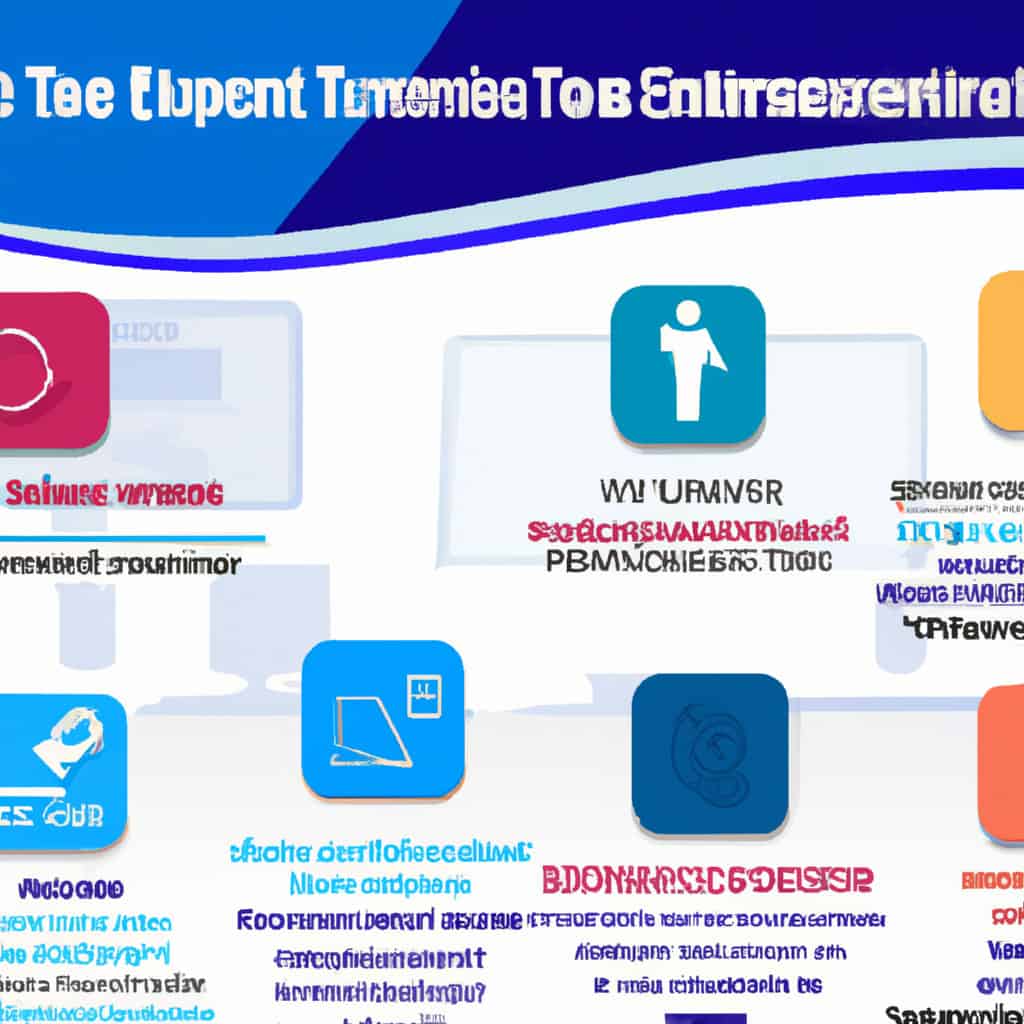How can organizations effectively streamline their employee training and development processes?
One solution lies in the utilization of employee training software.
By examining the features, functionalities, user experiences, and pricing models of various software solutions, this article aims to showcase the five best options available.
These software options offer a range of tools for comprehensive learning management, including the creation of interactive courses and assessments, the tracking of progress, and the analysis of training effectiveness.
Whether you are an HR professional, a training manager, or a business owner, this article will guide you in selecting the best employee training software for your organization’s needs.
Key Takeaways
- The best employee training software should have the ability to create interactive training modules and personalized learning paths.
- It should provide comprehensive learning management tools and a hands-on learning experience for better understanding and retention.
- The software should offer analysis of training effectiveness and provide insights into employee engagement and motivation.
- Pricing models and cost analysis should be considered, along with scalability and flexibility of the software solution.
Features and Functionality Comparison
The features and functionalities of the five best employee training software solutions will be compared in terms of their ability to create interactive courses, assessments, track progress, and analyze training effectiveness. These software options offer a range of tools for comprehensive learning management.
One key feature is the ability to create interactive training modules that engage learners and promote active participation. This allows employees to have a hands-on learning experience, enhancing their understanding and retention of the material.
Additionally, personalized learning paths are another important feature provided by these software solutions. This feature allows employees to receive customized training based on their skill levels and job roles, ensuring that they receive the most relevant and effective training.
User Experiences and Reviews
User experiences and reviews provide valuable insights into the effectiveness and usability of different employee training software solutions. These reviews offer an objective and impersonal perspective on the software’s features, functionalities, and overall performance. By analyzing user experiences, organizations can gain a better understanding of how these software solutions contribute to employee engagement and training effectiveness measurement.
User experiences highlight the software’s user-friendly interface, which allows learners to easily navigate through the courses and access the necessary resources. Additionally, reviews often mention the effectiveness of the software in promoting active engagement among employees. Through interactive features such as quizzes, assessments, and gamification elements, these software solutions enhance employee participation and motivation.
Furthermore, user reviews also shed light on the software’s ability to measure the effectiveness of employee training. Organizations can track learners’ progress, assess their performance, and gather data on training outcomes. This data can then be used to evaluate the success of the training programs and make informed decisions regarding future learning and development initiatives.
Overall, user experiences and reviews play a crucial role in helping organizations select the most suitable employee training software that not only enhances employee engagement but also provides accurate measurements of training effectiveness.
Pricing Models and Cost Analysis
Pricing models and cost analysis are important factors to consider when selecting an employee training software solution. Conducting a thorough analysis of the pricing models offered by different software providers is crucial to ensure that the chosen solution aligns with the organization’s budget considerations.
It is essential to evaluate the features and functionalities provided by each software option to determine the return on investment (ROI) it can deliver. The cost analysis should include not only the upfront purchase or subscription fees but also any additional expenses such as implementation costs, customization fees, and ongoing maintenance charges.
Budget considerations must take into account the specific training needs and goals of the organization, as well as the scalability and flexibility of the software solution.
Creating Interactive Courses and Assessments
Creating interactive courses and assessments requires careful planning and consideration of the tools and features offered by different software options.
One approach to enhance the learning experience is through gamification in employee training. Gamification involves the use of game elements and mechanics, such as points, badges, and leaderboards, to motivate and engage learners.
By incorporating interactive elements, such as quizzes, simulations, and branching scenarios, employees can actively participate in their learning journey. This approach not only enhances learner engagement but also promotes knowledge retention and application.
Furthermore, interactive learning allows for immediate feedback, enabling employees to identify areas of improvement and reinforce their understanding of the content.
Overall, the benefits of interactive learning in employee training include increased motivation, improved knowledge retention, and enhanced transfer of learning to the workplace.
Tracking Progress and Analyzing Training Effectiveness
An important aspect of tracking progress and analyzing training effectiveness is the ability to collect and analyze data on learner performance and engagement.
By implementing employee training software, organizations can easily monitor and evaluate the performance of their employees throughout the training process. This software allows for the collection of data on various metrics, such as completion rates, quiz scores, and time spent on each module.
By analyzing this data, organizations can identify areas of improvement and make necessary adjustments to their training programs. Additionally, employee training software enables the evaluation of training return on investment (ROI).
Conclusion
In conclusion, employee training software plays a crucial role in streamlining the learning and development process.
By offering a range of tools for comprehensive learning management, these software solutions enhance the skills and knowledge of employees in a structured and efficient manner.
From creating interactive courses and assessments to tracking progress and analyzing training effectiveness, these platforms provide organizations with the necessary tools to invest in employee development.
By utilizing the right software, businesses can ensure a skilled workforce, leading to increased productivity and success.
